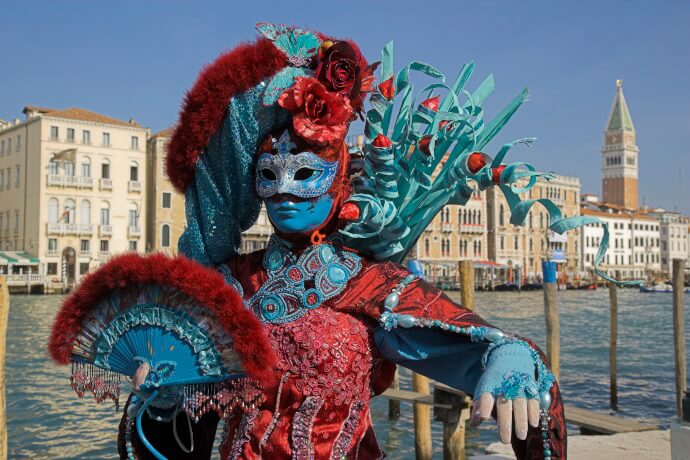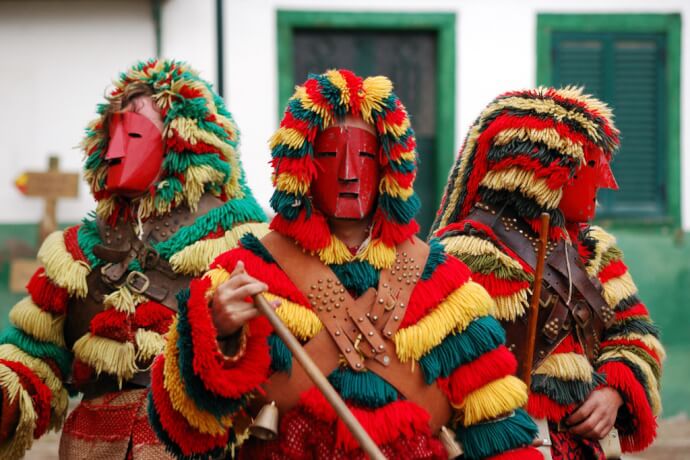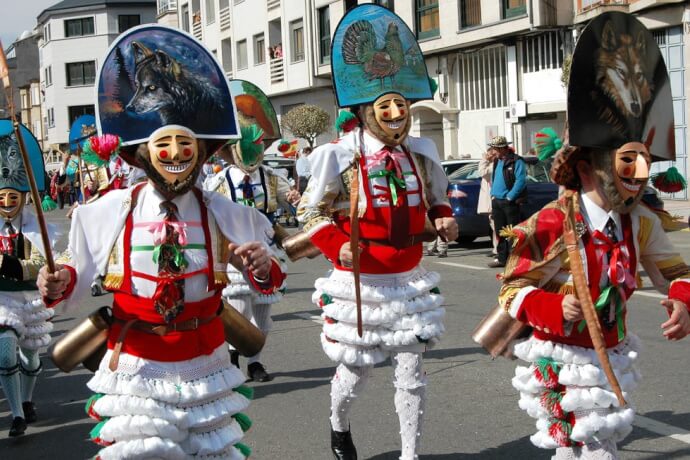Imagine a world where the streets come alive with a kaleidoscope of colours, music fills the air, and joy is contagious – welcome to the traditional celebration of Carnival! Across Europe, this festival is a time of unparalleled excitement, a spectacular fusion of parades, parties, and cultural richness. Picture flamboyant floats rolling through the streets and revellers in dazzling costumes and mysterious masks!
At night, elegant balls and vibrant club events offer a chance to dress up and dance the night away. For families, Carnival is equally enchanting, with special events that let children join in the magic, from parades to playful workshops. And as Carnival reaches its crescendo, the closing ceremonies offer a moment of awe, often marked by spectacular fireworks or the symbolic burning of an effigy, signalling the end of one of the world's most exhilarating celebrations.
Let’s dive in the origin of the carnival and find out how this joyful festivity is celebrated in Portugal, Spain and Italy!
The origin of carnival
Carnival is a festive season with a rich and complex history, incorporating both religious and non-religious elements. Its origins and evolution reflect a combination of local cultural practices, religious observances, and historical events.
This is a time when the world dances on the streets, saying a grand 'farewell to meat' (or "carne vale" in Latin) before the solemn Lenten period in the Christian calendar. Think of it as the last hurrah before 40 days of fasting and reflection leading up to Easter.
But there is more to it than just Christian customs. Carnival's zest also stems from ancient pagan festivals like Saturnalia and Bacchanalia—Roman bashes filled with feasts, fun, and a healthy dose of chaos. As Christianity spread, it cleverly intertwined these lively pagan traditions into its own, giving birth to the Carnival we know today.
It is more than just about religion, though. Carnival has evolved into a magnificent canvas for cultural expression. Every corner of the world adds its own splash of colour. People don masks, becoming who they want to be, mocking the powerful, and flipping societal norms on their head!
Carnival in Portugal
From the cheeky satire of Torres Vedras to the flower-laden parades of Funchal, the traditional charm of Loulé, and the ancient mystery of Podence, Portugal's Carnival is a mosaic of joy and tradition!
In Torres Vedras, near Lisbon, the air crackles with political jest and laughter. Here, men whimsically cross-dress as "Matrafonas" and giant papier-mâché figures, mocking political figures. It is an environmentally-conscious fun, with a proud tag of being an "Eco-Carnival".
Hop over to Funchal in Madeira and you will be in a floral paradise, infused with Brazilian samba beats. The city blooms with flower-filled parades, while children take centre stage in their own jubilant procession. And be sure to catch the "Trapalhão" Parade, where spontaneity and humour reign supreme.
Down south in Loulé, Algarve, tradition takes the lead. One of Portugal's oldest Carnivals, it stays true to its roots with a Portuguese flair. Satire is still the flavour of the day, as floats and costumes parading through the streets poke fun at the latest news and newsmakers.
Carnival in Spain
The Carnival in Spain is a fiesta like no other! Every corner of the country bursts into a kaleidoscope of colours, sounds, and celebrations. Let's whirl through some of Spain's most enchanting Carnivals - from the vibrant rhythms of Cádiz to the traditional charm of Verín and Xinzo de Limia.
First stop, Cádiz, the jewel of Andalusia's coast. Here, Carnival is an art form, a spectacle of wit, humour, and music. Picture the streets alive with the sounds of chirigotas - satirical and humorous musical groups who perform songs poking fun at current events and social issues. The atmosphere is electric, filled with dance, impromptu performances, and a spirit of joyous rebellion.
Journey north to Verín and Xinzo de Limia, in the heart of Galicia, where Carnival, or 'Entroido', is steeped in tradition. Here, the festivities are an intriguing blend of the sacred and the profane. The stars of the show are the 'Cigarróns' in Verín and the 'Pantallas' in Xinzo de Limia - mysterious figures donning elaborate masks and costumes, with bells tied to their waists. These characters are embodiments of local history and folklore!
Carnival in Italy
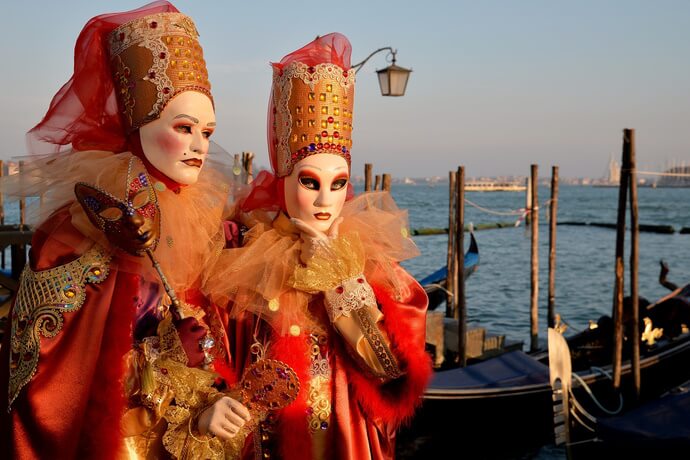
Welcome to the dazzling world of Carnival in Italy, where this festivity is considered a spectacle of history, culture, and sheer joy.
Let's begin in Venice, the city of masks and mystery. Here, Carnival is synonymous with elegance and mystery. Imagine gliding through misty canals, surrounded by people in ornate masks and opulent costumes reminiscent of the city's glorious past. The Venetian Carnival is a trip back in time, with its grand balls, gondola parades, and the iconic "Flight of the Angel" ceremony.
Next, we travel to Ivrea, near Turin, famous for its unique and lively Battle of the Oranges. This is more than just a fruit fight; it is a historic re-enactment symbolizing the people's rebellion against tyranny. Teams representing different districts of the city pelt each other with oranges, turning the streets into a vibrant, albeit messy, battlefield!
Finally, venture to Fano, close to Pesaro, where you will find one of the oldest Carnivals in Italy! Fano's celebration is known for its giant papier-mâché floats parading down the streets, accompanied by bands playing the traditional "Arabita" music. What sets is its "Getto" – a shower of sweets and chocolates thrown from the floats, making it a paradise for sweet-toothed revellers.
Ambrosian Carnival
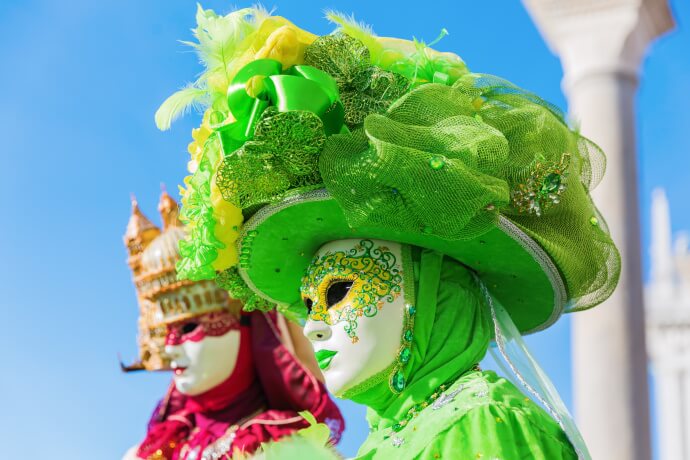
This celebration has its own unique thread in the rich tapestry of Carnival traditions. Milan, the fashion and design capital of Italy, adds a touch of sophistication and a twist to the classic Carnival festivities.
Unlike other cities in Italy, the Ambrosian Carnival extends until the following Saturday, known as "Sabato Grasso" (Fat Saturday). This unique timing is rooted in Milan's Ambrosian Rite, a liturgical tradition distinct from the more widespread Roman Rite of the Catholic Church. Legend has it that Saint Ambrose, Milan's beloved patron saint, was away on a pilgrimage and asked the city to wait for his return to start Lent.
During the Ambrosian Carnival, Milan bursts into life with several events, parades, and shows. Children are the heart of the celebration, with numerous activities and workshops designed specifically for them. They parade in their costumes, faces painted and spirits high, embodying the joyful essence of the Carnival. The scent of traditional treats like chiacchiere and tortelli is another highlight and a staple of the Carnival.
Unveiling the magic of Carnival
Carnival is indeed a non-stop street party! Cities across Portugal, Spain and Italy transform into giant open-air stages, hosting celebrations that last from day into night. These parties are a sensory delight, filled with the aromas of traditional foods and the clink of glasses toasting to life. Are you ready to experience southern Europe’s magic to the fullest?


